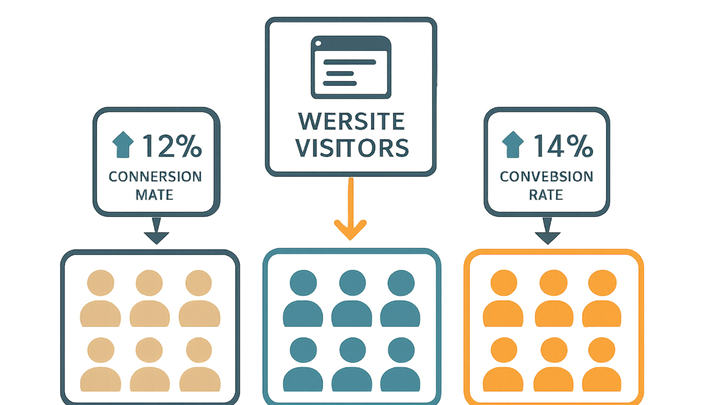Published on 2025-06-27T21:51:18Z
What Is a Test Group? Examples for Test Group
A Test Group is a specific subset of users in an A/B or multivariate test that receives a particular variant of a webpage, feature, or campaign. By comparing metrics (e.g., conversion rate, time on page) between one or more test groups and a control group, you can determine which variant performs best. Analytics platforms like GA4 and PlainSignal enable you to tag and segment these groups for precise measurement and analysis.
Test group
A user subset in A/B tests that receives a specific variant, enabling performance comparison across conditions.
Understanding Test Groups
Test Groups form the backbone of controlled experiments in analytics. They allow you to isolate the effect of a change by exposing only a portion of your audience to a new version while the rest see the original. This section breaks down the core concepts.
-
Test group vs control group
The Test Group sees the new variant, while the Control Group experiences the original. Comparing key metrics between them reveals the impact of your changes.
-
Multiple test groups and variants
In more advanced setups, you can have multiple test groups (e.g., Group A, Group B), each receiving its own variant. This lets you run multivariate tests and compare several ideas at once.
Implementing Test Groups in Analytics Platforms
To analyze test groups, you must tag user visits or events with a group identifier. Below are examples for GA4 and PlainSignal.
-
Google analytics 4 (GA4)
Use the
gtaglibrary to report experiment assignments. In this snippet, users are assigned to variant “A” of experimentEXP123:<!-- GA4 gtag snippet --> <script async src="https://www.googletagmanager.com/gtag/js?id=G-XXXXXXX"></script> <script> window.dataLayer = window.dataLayer || []; function gtag(){dataLayer.push(arguments);} gtag('js', new Date()); gtag('config', 'G-XXXXXXX'); // Report experiment impression gtag('event', 'experiment_impression', { 'experiment_id': 'EXP123', 'experiment_variant': 'A' }); </script> -
PlainSignal (cookie-free analytics)
Include the PlainSignal script and pass a custom
data-test-groupattribute:<link rel="preconnect" href="//eu.plainsignal.com/" crossorigin /> <script defer data-do="yourwebsitedomain.com" data-id="0GQV1xmtzQQ" data-api="//eu.plainsignal.com" data-test-group="B" src="//cdn.plainsignal.com/plainsignal-min.js"> </script>This sends a
test_groupdimension with value “B” to PlainSignal, so you can filter and compare metrics by group.
Best Practices for Test Group Assignment
Reliable results depend on sound group assignment and tracking. Follow these guidelines:
-
Randomized assignment
Ensure users are allocated to groups randomly to minimize bias and guarantee comparable cohorts.
-
Sufficient sample size
Calculate the required sample size beforehand to achieve statistical significance—too few users can lead to inconclusive outcomes.
-
Consistent instrumentation
Use the same tracking logic across all variants. Missing or inconsistent tags can skew results and invalidate your test.
